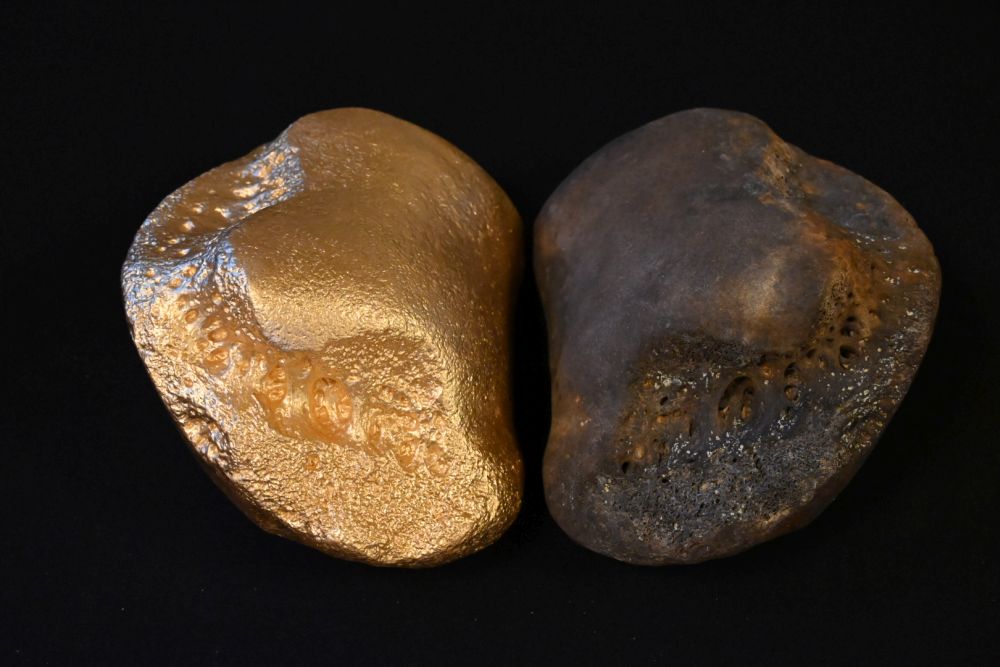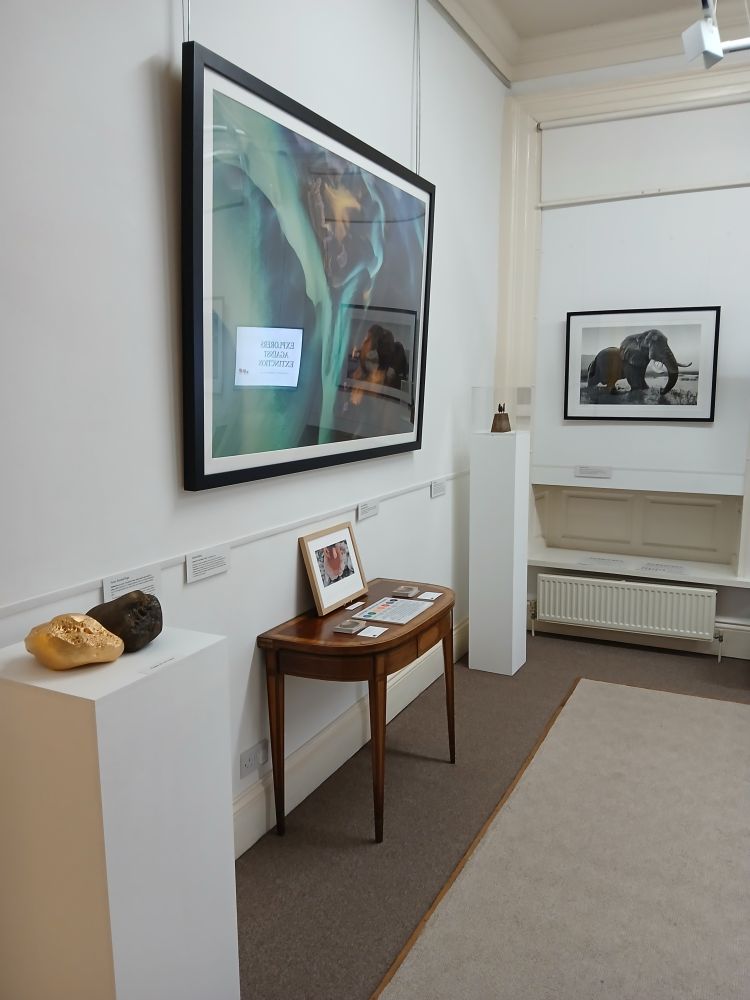Peter Randall-Page RA
Reflection on Extinction – you don’t know what you’ve got ’till it’s gone, 2023
Heel bone of a Steppe mammoth ( c. 1,000,000 BCE) and 3-D printed reverse cast of the fossil, cast in bronze and gilded gold.
Heel bone: h. 25 l. 20 w. 20 cm. Bronze: h. 25 l. 20 w. 20 cm
£25,000
To make an enquiry about this work please email robert@realworldconservation.org.uk
“The mammoth is one of Earth’s most iconic species. This mammoth lived nearly 1 million years ago in Happisburgh and its kind were driven away as historic climate change raised sea levels and drowned the tundra on which it lived. This bone comes from a mammoth’s foot, representing its walk towards extinction, mirrored by a gilded, bronze cast of the fossil in gold, representing the irreplaceable value of what we’ve lost.”
Listen to Peter Randall-Page explaining Reflections on Extinction:
Peter Randall-Page is a British sculptor renowned for his exploration of organic forms, patterns, and textures inspired by nature. His work primarily revolves around the themes of growth, evolution, and the natural geometry found in plants, rocks, and seeds, reflecting the intricacies of the natural world. Known for his large, monumental stone sculptures as well as smaller, intricately patterned pieces, Randall-Page uses natural forms to investigate universal principles, such as symmetry, growth, and repetition. His sculptures often feature repetitive, rhythmic patterns that echo natural growth processes, inviting viewers to reflect on the underlying order and structure that governs all living organisms.
Randall-Page’s work is heavily influenced by his extensive study of geometry and organic symmetry, particularly the Fibonacci sequence and other mathematical structures found in nature. This influence is apparent in many of his iconic sculptures, such as *Seed*—a monumental sculpture in the Eden Project in Cornwall. *Seed* is a massive, egg-shaped granite structure carved with intricate, repeating patterns that mimic the geometric arrangement of cells and plant structures, symbolizing the potential and life embedded within a seed. The sculpture exemplifies his ability to draw connections between mathematics and the natural world, creating pieces that feel both grounded in organic forms and deeply meditative.
One of the defining features of Randall-Page’s approach is his dedication to traditional techniques and his focus on working directly with stone. He often uses hand tools to chisel and carve intricate patterns into stone, creating a tactile surface that encourages physical interaction. By working with enduring materials like granite, sandstone, and limestone, he adds a sense of permanence to his work, embodying the timeless qualities of nature. Randall-Page’s artistic process is one of patience and precision, allowing the natural characteristics of each stone to emerge and influence the final form. This approach mirrors natural processes, as he often describes his work as a collaboration with the material, letting the stone’s natural qualities inform the structure and design.
In addition to his large-scale public sculptures, Randall-Page has produced many drawings and prints that explore similar themes. His two-dimensional works are studies in pattern and form, using repeated motifs to investigate symmetry, balance, and harmony. His work has been widely exhibited across the UK and internationally, with pieces displayed in major public spaces, museums, and collections. Peter Randall-Page’s contributions to contemporary sculpture reflect a profound respect for nature and a desire to reveal the inherent order within it, encouraging viewers to see the connections between art, science, and the natural environment. His work remains influential for its combination of traditional craftsmanship and philosophical depth.

Palace of Westminster, London

Nature in Art Museum, Glouscestershire

